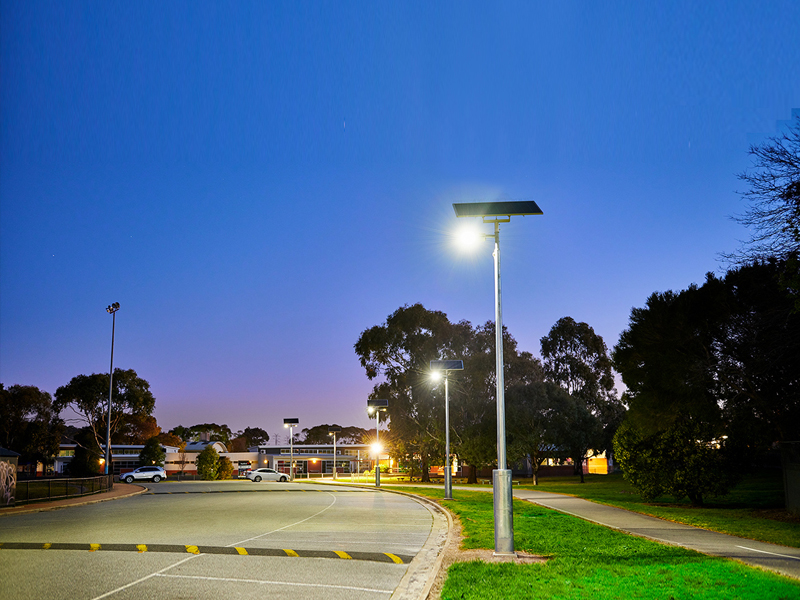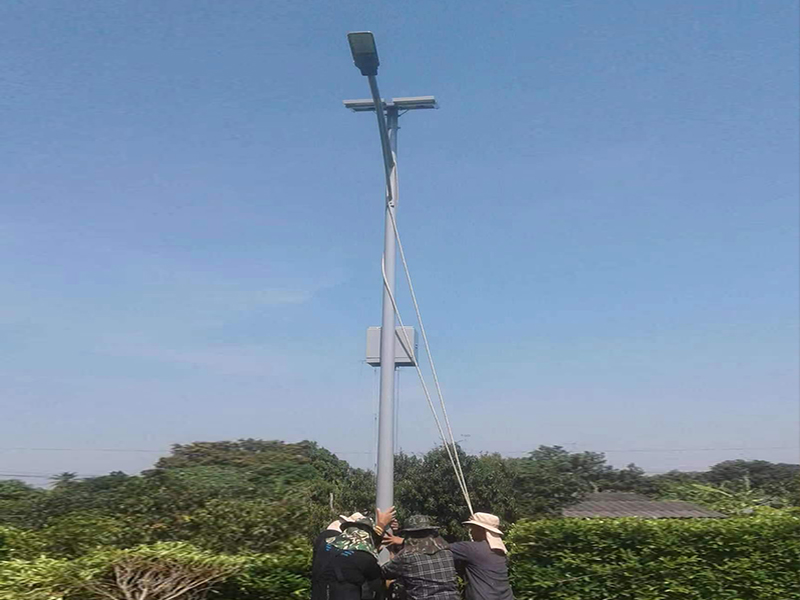Now the country vigorously advocates “energy conservation and environmental protection”. With the progress of technology, there are many energy-saving products, including solar street lamps. Solar street lamps are pollution-free and radiation free, which conform to the modern concept of green environmental protection, so they are loved by everyone. However, in addition to its many advantages, solar energy also has some disadvantages. What are the specific shortcomings of solar street lamps? To solve this problem, let’s introduce it.
The shortage of solar street lamps
High cost: the initial investment of solar street lamps is large, and the total cost of a solar street lamp is 3.4 times that of a conventional street lamp with the same power; The energy conversion efficiency is low. The conversion efficiency of solar photovoltaic cells is about 15%~19%. Theoretically, the conversion efficiency of silicon solar cells can reach 25%. However, after actual installation, the efficiency may be reduced due to the obstruction of surrounding buildings. At present, the area of solar cell is 110W/m ², The area of 1kW solar cell is about 9m ², It is almost impossible to fix such a large area on the light pole, so it is still not applicable to expressways and trunk roads; It is greatly affected by the geographical and climatic conditions. Because the energy is supplied by the sun, the local geographical and climatic conditions directly affect the use of street lamps.
Insufficient lighting demand: too long rainy days will affect the lighting, resulting in the illumination or brightness failing to meet the requirements of national standards, or even the lights are not lit. Solar street lamps in some areas will be lit too short at night due to insufficient daytime lighting; The service life and cost performance of parts are low. The price of battery and controller is high, and the battery is not durable enough, so it must be replaced regularly. The service life of controller is only 3 years generally. Due to the influence of external factors such as climate, the reliability is reduced.
Difficulty in maintenance: the maintenance of solar street lamps is difficult, the quality of the heat island effect of the battery panel cannot be controlled and detected, the life cycle cannot be guaranteed, and unified control and management cannot be carried out. Different lighting conditions may occur at the same time; The illumination range is narrow. The current solar street lamps are inspected by the China Municipal Engineering Association and measured on site. The general illumination range is 6-7m. If they are beyond 7m, they will be dim and unclear, which cannot meet the needs of expressways and main roads; The industry standard of solar street lighting has not been established; Environmental protection and anti-theft problems. Improper battery handling may cause environmental protection problems. In addition, anti-theft is also a big problem.
The above shortcomings of solar street lamps are shared here. In addition to these shortcomings, solar street lamps have the advantages of good stability, long life, high luminous efficiency, simple installation and maintenance, high safety performance, energy conservation, environmental protection, economy and practicality, and can be widely used in urban main and secondary roads, residential areas, factories, tourist attractions, parking lots and other places.
Post time: Dec-02-2022






